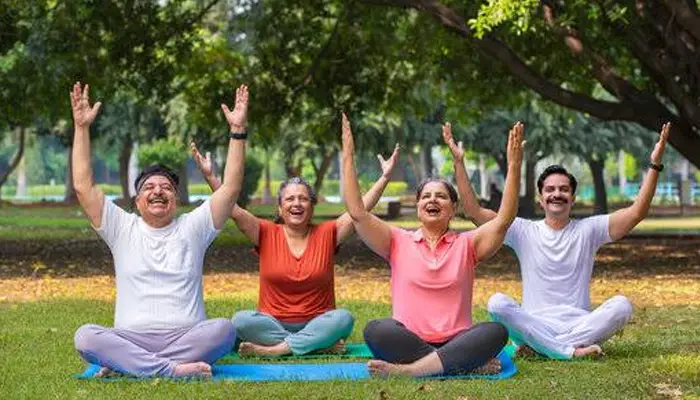World Laughter Day: Exploring the Healing Potential of Laughing Yoga – Fact or Fiction?
- Admin
- 1 year ago
- 4 minutes read

World Laughter Day, celebrated on the first Sunday of May, honors the universal power of laughter. This day serves as a reminder of the importance of laughter in promoting happiness, health, and unity across cultures and communities. Laughter is not only contagious but also has numerous benefits, including reducing stress, boosting the immune system, and enhancing overall well-being. Through shared laughter, World Laughter Day encourages people to find joy in life's simple moments and spread positivity to those around them.

In light of this context, let's delve into the practice of Laughing Yoga – a form of yoga that incorporates laughter with the aim of enhancing heart health and overall well-being.
What is Laughing Yoga?
Laughing yoga, also referred to as laughter yoga, encompasses a series of exercises combining movement and breathing techniques to foster deliberate laughter. Advocates tout its potential to address physical, psychological, and spiritual concerns, asserting that simulated laughter can offer comparable benefits to spontaneous laughter.
Originating in 1995, Dr. Madan Kataria, a family physician in Mumbai, India, pioneered laughing yoga. He contends that it can elevate mood, alleviate stress, fortify the immune system, boost energy levels, enhance overall well-being, and bolster resilience in facing adversity. The practice, he argues, equips individuals with the ability to summon laughter at will, serving as a valuable coping mechanism in stressful situations when external sources of amusement may be lacking.

Additionally, laughing yoga is believed to aid stress management through controlled breathing, facilitating increased oxygen intake to activate the body’s natural relaxation response. In today’s fast-paced world, where laughter may be sidelined amidst daily responsibilities, laughing yoga serves as a means to cultivate laughter independently of external stimuli.
With its global reach spanning over 110 countries, laughing yoga is gaining traction both in-person and online. Laughing coaches are extending workshops to diverse settings, including colleges, workplaces, and senior communities, making the practice accessible to a wide audience.
How to Do it?
Laughing yoga, often conducted in group settings like clubs or workshops, involves a trained instructor guiding participants through various exercises to foster joy and laughter. Sessions typically commence with simple breathing techniques, clapping, and chanting, aimed at inducing relaxation. For instance, participants might rhythmically clap while chanting "ho-ho, ha-ha-ha."
Initially perceived as silly, these exercises aim to dispel internal judgments and ego. Improv activities, positive affirmations, gentle stretches, yoga breath work, and meditation may also be incorporated. Collectively, these practices encourage laughter, relaxation, and a lighter perspective on oneself.
Does it Really Work?
Laughter, beyond its immediate mood-lifting effects, holds promising long-term benefits. When we laugh, our bodies release endorphins, dopamine, and serotonin, promoting a sense of happiness while dampening stress hormones like cortisol. This biochemical interplay not only enhances our mood but also bolsters our immune system, lowers blood pressure, and reduces pain, contributing to overall well-being.
Moreover, laughing with others fosters social connections and strengthens relationships, fostering feelings of security and relaxation. Whether the laughter is genuine or simulated, the body responds similarly, offering potential mental and physical health benefits. Studies indicate that even simulated laughter, such as in laughing yoga, can lower depression rates and improve mood, requiring minimal cognitive effort and appealing to a broad audience.

Laughing yoga, while showing promise in reducing stress and improving mood, requires further investigation due to study limitations. However, its accessibility and low risk make it an attractive adjunct to existing healthcare practices. It's essential to view laughing yoga as a complementary tool rather than a standalone treatment. Overall, engaging in laughing yoga presents few drawbacks and holds potential for individuals seeking to enhance their mental and physical well-being.
Laughing yoga has gained traction as a delightful method to unwind and lighten up. Participants engage in a variety of movements, improvisations, and breathing exercises, redirecting focus from life's stressors to the present moment. Through intentional laughter, stress levels may decrease, although further research is warranted to understand its full benefits. With virtually no drawbacks, laughing yoga is accessible to most individuals. It offers a platform to shed inhibitions, relish moments of mirth, and rediscover the simple pleasure of laughter. In essence, it's an enjoyable avenue to cultivate joy and resilience in the midst of life's challenges.












